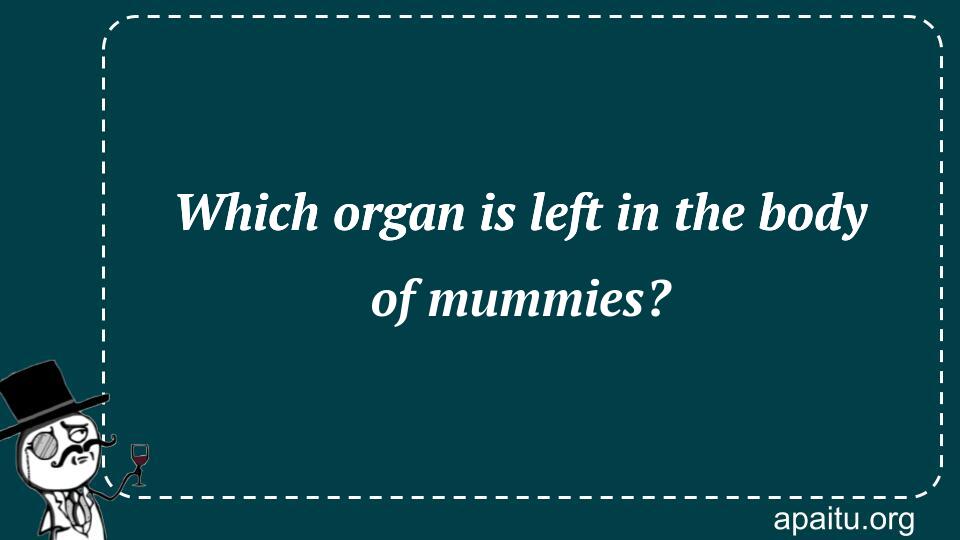Question
Here is the question : WHICH ORGAN IS LEFT IN THE BODY OF MUMMIES?
Option
Here is the option for the question :
- Brain
- Liver
- Heart
- None
The Answer:
And, the answer for the the question is :
Explanation:
Although mummification often involved the removal of most of a body’s internal organs, the heart served a unique purpose. The heart was left in the body since the deceased will require it in the Hall of Judgment. Other organs, such as the stomach, lungs, and liver, were preserved by ancient Egyptian embalmers and kept in jars with the mummified body.

The ancient Egyptians were known for their elaborate and sophisticated burial practices, which included the mummification of the deceased. Mummification was a complex process that involved the removal of most of the organs from the body, with one notable exception: the heart. The heart was considered the most important organ in the body, and it was believed to be the source of intelligence, emotion, and spiritual essence.
The process of mummification began with the removal of the brain, which was seen as a useless and disposable organ. This was accomplished by inserting a long hook through the nose and into the brain, which was then pulled out in small pieces. The internal organs, including the liver, lungs, stomach, and intestines, were also removed and placed in canopic jars, which were then buried alongside the mummy.
However, the heart was left in place, as it was believed to be the seat of the soul and the key to eternal life. It was believed that the heart would be weighed against the feather of Ma’at, the goddess of truth and justice, in the afterlife. If the heart was found to be lighter than the feather, the deceased would be allowed to enter the afterlife and live forever in the presence of the gods.
To further protect the heart, it was often wrapped in linen and placed back inside the body. A small amulet known as a “heart scarab” was also placed over the heart, bearing a spell that would ensure its protection and safe passage to the afterlife.
The importance of the heart in ancient Egyptian culture is reflected in their art and literature. The heart was often depicted as the source of wisdom and emotion, and it was frequently shown being weighed against the feather of Ma’at in funerary scenes. The heart was also a symbol of love and devotion, and it was often used in jewelry and amulets.
the heart remains a powerful symbol of life and vitality in many cultures around the world. The ancient Egyptians’ belief in the importance of the heart as the seat of the soul and the key to eternal life continues to fascinate and inspire people today, and serves as a reminder of the enduring power and mystery of this remarkable civilization.